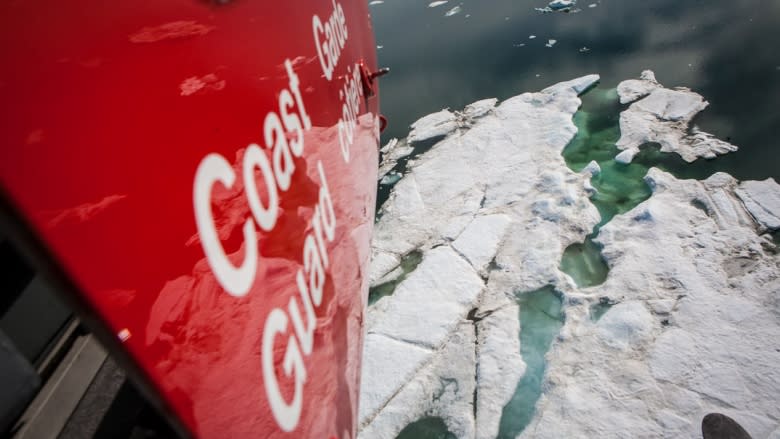Proposed U.S. Beaufort Sea drilling leases infringe on Canada's sovereignty, says Yukon
A proposal for new oil and gas drilling leases in the Beaufort Sea could re-ignite a long-simmering border dispute between the United States and Canada.
Last week, the U.S. Bureau of Ocean Energy Management issued a proposal for new leases off the coast of Alaska. The map of the area that could be opened to drilling includes offshore territory Canada claims as its own.
For decades, the U.S and Canada have disagreed about the offshore boundary in the Beaufort. Canada claims it runs due North following the land border between Yukon and Alaska's North Slope. The U.S. maintains the sea border should go out at a 90-degree angle from the land.
The difference is a wedge-shaped, 21,000-square-kilometre area about the size of Lake Ontario.
The Yukon government is not happy with the proposal for oil and gas leases in the disputed area. Brad Cathers, the territory's justice minister, called the move "a violation of Canada's Arctic sovereignty."
Dispute dates back nearly two centuries
"Until that dispute comes to a conclusion we feel it would be inappropriate for the U.S. government to be entering into lease agreements in the disputed area," said Yukon Premier Darrell Pasloski in an interview Friday.
"At this point there isn't an appetite for such drilling offshore and for the Americans to be putting leases in what we feel is Canadian jurisdiction, at a time when there's still so much uncertainty around the safety of offshore drilling, this is a real issue."
Michael Byers, a political scientist at the University of British Columbia, said the issue underscores the need for Canada and the U.S. to at long last negotiate a settlement to the Beaufort dispute, which dates back to an 1825 treaty between Great Britain and Russia, which owned Alaska at the time.
"That [proposed drilling] is provocative in the sense that it does bring the international boundary dispute back into play. And that's why I think the Canadian government should respond with an invitation to open negotiations," he said.
'We need to solve this problem'
Byers said the apparently cozy new relationship between Prime Minister Justin Trudeau and President Barack Obama means the time is right to resolve this longstanding wrinkle in the Canada-U.S. relationship.
"Every five or 10 years some minor point of friction will arise as it has now and we need to solve this problem once and for all by sitting down with the United States and negotiating an agreed boundary."
Amy Mills, a spokesperson for Global Affairs Canada, said the department is reviewing the lease proposal.
"This dispute is well managed by Canada and the U.S. and will be resolved peacefully in accordance with international law when both parties are ready to do so," she wrote in an email.
In a February letter to the Bureau of Ocean Energy Management, U.S. Secretary of State John Kerry wrote that the State Department wants to be consulted before any lease sales go ahead, citing the boundary dispute with Canada.
"The Department further notes that potential leases to areas beyond 200 nautical miles from coastal baselines could have significant foreign policy implications, and accordingly requests consultation prior to any future leasing of such areas," Kerry wrote.
The Beaufort lease area would not open to exploration before 2020. The Bureau of Ocean Energy Management will continue accepting public comments on the proposed drilling areas until mid-June.



